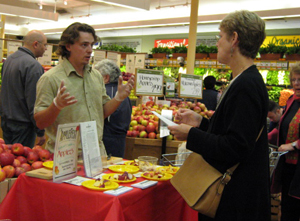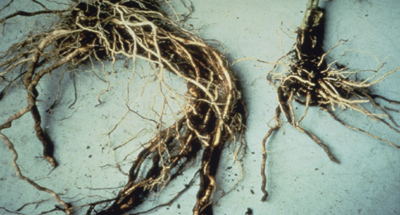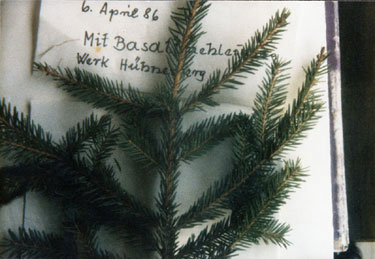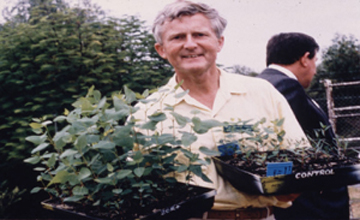Real Food Campaign
Please go to our new website at RealFoodCampaign.org
The Real Food Campaign will make nutrient dense foods available in the marketplace and create a new standard for food quality.
The Real Food Campaign is educating and networking with consumers and retailers, farmers, scientists and policy makers about the need for nutrient dense foods.
The Real Food Campaign coordinates and supports all programs that produce healthier and more nutrient dense crops for our food supply.
Nutrient Dense foods are healthier, more vibrant, tastier and last longer.
Real Food: ...
Amendment Providers
Global Repair www.globalrepair.ca/fertilizer.htm
Tainio Technology and Technique, inc. www.tainio.com
International Ag Labs, inc. www.aglabs.com
Midwestern Bio-Ag www.midwesternbioag.com
Consultants
High Brix Gardens - Jon Frank http://www.highbrixgardens.com
International Ag Labs - Dan Skow http://www.aglabs.com
Arden Andersen https://www.linkedin.com/in/arden-andersen
Tainio Technology and Technique - Bruce Tainio http://www.tainio.com
Lancaster Ag Products - Rueben Stoltzfus 717-293-9701
Advancing Eco-Agriculture - John Kempf 212-696-7251
Oregon Ag - Amos King 717-656-0067
Pro-Active Ag - Mike Hilton http://www.proactiveag.com
Profit Pro Llc. James Ladlie http://www.profitproag.com
Rocks for Crops
From humble beginnings in Tanzania in 1984 to the establishment of a course at the University of Guelph, to the official opening of an Agrogeology Centre in Indonesia, the field of agrogeology is gaining wider global interest and exposure. The first Rocks for Crops International Conference took place in Brasilia, Brazil on November 7-14, 2004. Visit their website, Rocks for Crops , for abstracts of papers from the conference. Remineralize the Earth is working on the development of a large research database that will include agrogeology research from all over the world. ...
Rocks for Crops
Rocks for Crops
From humble beginnings in Tanzania in 1984 to the establishment of a course at the University of Guelph, to the official opening of an Agrogeology Centre in Indonesia, the field of agrogeology is gaining wider global interest and exposure. The first Rocks for Crops International Conference took place in Brasilia, Brazil on November 7-14, 2004. Visit their website, Rocks for Crops , for abstracts of papers from the conference. Remineralize the Earth is working on the development of a large research database that will include agrogeology research from all ...
Azomite Rock Dust as a Cure for Citrus Blight Disease
Azomite Rock Dust as a Cure for Citrus Blight Disease
J.F.L. Childs
As written in a letter to Remineralize the Earth Editor, Joanna Campe
J.F.L. Childs used Azomite brand rock dust to cure trees affected with Citrus Blight Disease. To his knowledge, those cured are the only ones that have ever recovered from the disease which was reported in Florida in 1870. According to his research, this disease occurs wherever citrus trees are grown, although the name is different in different countries. He has reported research on this disease as follows:
(more…)
The Importance and Effects of Rock Dust in Orchards and Gardens
The Importance and Effects of Rock Dust in Orchards and Gardens
Closeup of tomato roots - Remineralized plant on the left.
Fritz Leipold
Germany
Fritz Leipold has over 25 years experience with the application of basalt rock dust, especially in orchards, fruit, and vegetable gardens. He is a retired garden landscape consultant and has experience in education and teaching.
He was head of the Department for Tree Nurseries and Landscaping at the Research Training Institute, and now Technical College in Weihenstephan, and has been a teacher and advisor for vegetables, fruit, ...
The Effects of Basalt Rock Dust Emissions on Trees in Germany
The Effects of Basalt Rock Dust Emissions on Trees in Germany
Fritz Leipold
Germany
The slope beside the basalt quarry was created during the years 1952-1965, and on this slope the natural effects of basalt emissions on spruce trees were discovered. The material utilized consists of the layers of rock dust that were situated above the basalt and could not be used for production. From 1-6 meters depth of soil and clay were taken out. The planting of the hill with spruce trees began in 1972 and the forester of the region was very skeptical and did not tend the trees.
...
Men of the Trees in Western Australia
Men of the Trees in Western Australia
Field and nursery trials directed by Barrie Oldfield, President.
Interpreting Results:
Five times the growth for the same species of trees.
The potting out time has been shortened from five months to six weeks.
The fineness of the dust particles is more important than the actual mass of the dust material.
With dust of which 61.9% of has a particle size of 75 microns or less, the beneficial plateau in these trials is in the region of 15-20 tons/ha. At 12 tons/ha the plant growth was markedly inferior.
Men of the Trees plant ...










